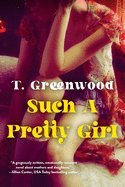
| Publisher: | Kensington | |
| Genre: | Women, Psychological, World Literature, Family Life, American - 20th Century, General, Fiction | |
| ISBN: | 9781496739322 | |
| Pub Date: | October 2022 | |
| Price: | $16.95 |
| Fiction |
by T. Greenwood
Seasoned novelist T. Greenwood's psychologically complex and lyrically written Such a Pretty Girl offers a glimpse into the controversial rise to fame of a child star in 1970s New York. Ryan Flannigan has built a bucolic life with her daughter in Vermont, outside the media's eye. But when a suggestive photo of her as a child is found in the possession of a pedophilic billionaire, Ryan must reevaluate the life she left behind in Manhattan's West Village and her determined, spotlight-obsessed mother, Fiona, who directed her career. As Ryan reconnects with old friends and revisits hauntingly familiar places, she is forced to remember the summer of 1977 and what happened the night of the fateful New York City blackout.
Carefully crafted around intersecting present and past plotlines, Such a Pretty Girl balances on the edge of womanhood and girlhood, revealing the strength and vulnerability of those always under the lingering gaze of men. Greenwood (Keeping Lucy; The Forever Bridge) does an expert job of constructing Fiona as a complex character who engages in toxic behavior but embodies just enough charm to draw in her daughter and readers alike. Meanwhile, Ryan's perspectives reveal the heartbreaking tenacity of a girl who longs for her mother. Perhaps most engaging, however, is Greenwood's atmospheric, lived-in portrait of 1970s New York. From the grease- and sand-encrusted restaurants of Coney Island to the sun-spotted, well-worn facades of the West Village, this snapshot is equal parts alluring and disturbing, nostalgic and insightful. --Alice Martin, freelance writer and editor
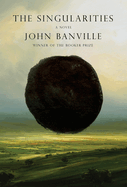
| Publisher: | Knopf | |
| Genre: | Psychological, Satire, Literary, Fiction | |
| ISBN: | 9780525655176 | |
| Pub Date: | October 2022 | |
| Price: | $30 |
| Fiction |
by John Banville
Fans of Irish novelist John Banville (Snow; Holy Orders, writing as Benjamin Black; Ancient Light) will recognize many of the characters, even one now using an assumed name, in The Singularities. They include Adam Godley Jr., son of the famous mathematician Adam Godley Sr., and young Adam's wife, Helen. Also returning is Freddie Montgomery, who committed murder in The Book of Evidence and returned in two of Banville's subsequent works. This time, intent on "total transformation," Montgomery calls himself Felix Mordaunt. He has been released from prison after "some twenty years of a mandatory life sentence" and has returned to Coolgrange, his childhood estate. Only now it's called Arden House, Godley's family lives there and Mordaunt returns to work as the family's driver. One of his fares is William Jaybey, whom the younger Adam has hired to write a biography of his father, celebrated for having developed something called the Brahma theory. But Jaybey has a long-held vendetta against the deceased Godley and plans to get revenge by "chipping away with mallet and chisel" at his reputation.
Intrigues follow and secrets are revealed in this exceptional work. Like many Banville novels, this one is heavier on descriptions than plot, but what exquisite descriptions: a gate at Arden House has "rust reminiscent of a dusting of roughly ground cinnamon" and gives "the impression of leaning dejectedly over itself, limp and blear-eyed, defeated by the years." The Singularities is like a carriage ride along a country lane: it proceeds slowly, affording ample time to admire the scenery. --Michael Magras, freelance book reviewer
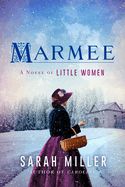
| Publisher: | Morrow | |
| Genre: | Women, Adaptations & Pastiche, Biographical, Fiction, Historical, Civil War Era | |
| ISBN: | 9780063041875 | |
| Pub Date: | October 2022 | |
| Price: | $27.99 |
| Fiction |
by Sarah Miller
Sarah Miller brings the wise, patient mother of Little Women to vibrant, complicated life in Marmee, her fourth historical novel. As the Civil War rages, Margaret March must care for her four daughters while her husband, Amos, serves as an army chaplain. The novel opens with one of many scenes familiar to readers of Little Women, the March girls giving up their Christmas breakfast to feed a destitute German family. Miller's first-person narration adds a new layer: Marmee's deep conflict about asking her daughters to go without, even while she longed to help those less fortunate than her own family.
Miller (Violet and Daisy; Caroline; The Borden Murders) ably explores Margaret's inner struggles: her efforts to tame her temper; her mixed pride in and frustration with her girls; and her affection and worry for her husband, mingled with exasperation at his lack of concern for money. Readers see much of Margaret's work at the local charity rooms, as well as her relationship with their housekeeper, Hannah, and the guilt she harbors about a past incident that cost the March family their fortune. Miller balances these new additions with the familiar beats of Alcott's classic novel: Jo's writing "vortexes" and publishing journey; Beth's love for music and eventual illness; Amy's artistic aspirations; Meg's journey to marriage and motherhood; and the presence of Laurie, who becomes a surrogate brother and son. The result is a loving, dynamic portrait of a woman to be reckoned with, who balances deep care for her family with her own fierce desires to be heard, respected and loved. --Katie Noah Gibson, blogger at Cakes, Tea and Dreams
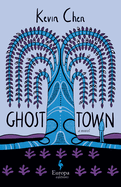
| Publisher: | Europa Editions | |
| Genre: | Asia (General), World Literature, Family Life, Mystery & Detective, Crime, Coming of Age, Hard-Boiled, Fiction, Gay, LGBTQ+, Noir, Siblings | |
| ISBN: | 9781609457983 | |
| Pub Date: | October 2022 | |
| Price: | $27 |
| Mystery & Thriller |
by Kevin Chen, trans. by Darryl Sterk
Former actor turned award-winning writer Kevin Chen's Ghost Town is certainly cinematic, populated with unforgettable characters--living, dead and in between.
Welcome to Yongjing, "a rural backwater in central Taiwan," just as Ghost Month looms. The Chen clan is about to experience an unexpected reunion, drawn together by the prodigal appearance of the clan's youngest, Keith. Years earlier, a six-month writing residency in Berlin enabled Keith's escape from their abusive mother and homophobic community. He found love with T, which led to a registered partnership. Then suddenly T was dead, and Keith was imprisoned for murder. When Keith is released 10 years later, he returns to Yongjing, and what's left of his family.
Cliff and Cicada Chen had five daughters--Beverly, Betty, Belinda, Barbie and Plenty--trying to birth a son, then came Heath and finally Keith. All of them have grown to have complex lives, and into that maelstrom, with nowhere else to go, Keith arrives, with so many family secrets left to be bared and shared.
If the family's name is not a hint of autobiographical inspiration, Chen's (Three Ways to Get Rid of Allergies) afterword affirms plenty of additional overlaps: his Yongjing youth, his many sisters, his gay identity, his town's homophobia, his current Berlin home. Professor Darryl Sterk translates, his unconventional choices adroitly explained in his ending note. Chen divulges key events in multi-voiced, circular repetition, each time adding a little more information, as if to increase the circumference and take up more space. With each iterative reveal, Chen gloriously resurrects the dead--and emboldens the living. --Terry Hong, Smithsonian BookDragon
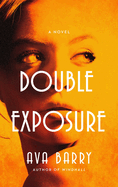
| Publisher: | Pegasus Crime | |
| Genre: | Psychological, Mystery & Detective, Thrillers, Fiction, Women Sleuths, Noir | |
| ISBN: | 9781639362240 | |
| Pub Date: | October 2022 | |
| Price: | $25.95 |
| Mystery & Thriller |
by Ava Barry
Two young women of similar backgrounds--wealthy, privileged and with families who have disintegrated--are drawn to each other in Double Exposure, the second neo-noir novel from Ava Barry (Windhall). This provocative, character-driven drama manages to keep its surprising twists in focus while also giving readers a lyrical look at Los Angeles.
Private investigator Rainey Hall, along with two friends, co-owns an all-female boutique agency that has been increasingly successful because of its exclusivity. Rainey has a soft spot for needy clients such as Melia van Aust, whose fragility is palpable. Four years ago, Melia's wealthy parents were brutally murdered in Slant House, the family hillside mansion; her brother, Jasper, vanished that same night. Melia still bears the scars of that attack. Having returned to Slant House, Melia wants Rainey and her crew to track down Jasper and find out who is sending her threatening letters. Melia has never been able to escape the notoriety of the murders, preferring to stay inside so she won't be recognized. Rainey feels a kinship: her father was a famous composer, and she spent her childhood on world concert tours as a violin prodigy. The two women become lovers as Rainey is caught in the net of Melia's emotional frailty; events are exacerbated by the fact that Rainey's lawyer controls her life--and her fortune. A stupendous turn adds an intense level of terror to Double Exposure.
The women's psyches parallel Barry's evocative look at Los Angeles where "even in private homes, the city pressed in at the edges, reminding you of its presence." --Oline H. Cogdill, freelance reviewer
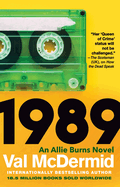
| Publisher: | Atlantic Monthly Press | |
| Genre: | General, Thrillers, Fiction | |
| ISBN: | 9780802160102 | |
| Pub Date: | October 2022 | |
| Price: | $27 |
| Mystery & Thriller |
by Val McDermid
Val McDermid's ambitious project of chronicling each decade's highlights, showing how big and small events relate to individuals, takes another leap forward with the enthralling 1989, the logical follow-up to 1979. Through the lens of investigative journalist Allie Burns, McDermid (How the Dead Speak; Broken Ground; The Vanishing Point) dramatizes how major events influence subsequent decades. Setting her novels at the end of each decade allows McDermid--and Allie--to reflect on what has transpired during the past 10 years and examine how the world changes.
The newspaper's wealthy, narcissistic owner has reassigned Allie from her investigative reporting job in Glasgow, Scotland, to a post in Manchester, England. The job and Manchester suit her; she and her partner, Rona Dunsyre, create a life filled with friends. Rona's family accepts her relationship with Allie, though Allie's family does not. Allie, as a journalist, has a window on major world events, which McDermid seamlessly incorporates into her work, including the AIDS crisis and how pharmaceutical companies withheld drugs; East Berlin and the Soviet Union; the bombing of Pan Am flight 103 over Lockerbie; the deadly football riot in Sheffield.
This second novel in the Allie Burns series delves even more deeply into Allie's psyche. Covering all these tragedies has taken a psychological toll, and she reevaluates her career choice. Allie and Rona's relationship deepens, with Rona emerging as even more essential to Allie's personal and professional life. A playlist of McDermid's personal top 40 music enhances 1989, a novel that accentuates the decade's advances and failures. --Oline H. Cogdill, freelance reviewer

| Publisher: | St. Martin's Griffin | |
| Genre: | Women, Romance, Contemporary, Fiction | |
| ISBN: | 9781250836502 | |
| Pub Date: | October 2022 | |
| Price: | $16.99 |
| Romance |
by Jacqueline Firkins
In this sweet and clever Hollywood romance, an anxious, clumsy costume designer and a sexy television superstar find themselves falling for each other, in spite of the Twitter hashtags and angry fans trying to keep them apart. Making her debut in adult fiction, Jacqueline Firkins, a costume designer and author of two young adult novels (How Not to Fall in Love; Hearts, Strings, and Other Breakable Things), puts her theater skills to use in Marlowe Banks, Redesigned.
Marlowe Banks was a costume designer in the New York theater world--until the play she was working on flopped and her engagement fell apart. She panics and flees to Los Angeles, much to her parents' dismay, taking a job as a lowly costume production assistant on a high-budget television show starring Hollywood's favorite bad boy, Angus Gordon. But then, through a series of flukes, Marlowe ends up playing a small role in an episode of the show. After interacting with Angus more and finding confidence in the feedback she receives on her acting, Marlowe realizes that there's more to Angus than his sexy persona and that maybe she is capable of more than creating catastrophes.
Charming, funny and thoughtful, Marlowe Banks, Redesigned is both a romance and the story of a woman finding her own voice after her parents, previous relationships and workplaces have all squelched her. Fans of Katherine Center's The Bodyguard or Annabel Monaghan's Nora Goes Off Script are sure to love Marlowe Banks, Redesigned. --Jessica Howard, freelance book reviewer
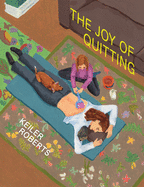
| Publisher: | Drawn & Quarterly | |
| Genre: | Biography & Memoir, Nonfiction, Literary, Comics & Graphic Novels | |
| ISBN: | 9781770466227 | |
| Pub Date: | October 2022 | |
| Price: | $24.95 |
| Graphic Books |
by Keiler Roberts
Ignatz Award-winner Keiler Roberts (My Begging Chart) collates a decade of work from five previous titles--Powdered Milk (2012), Miseryland (2015), Sunburning (2017), Chlorine Gardens (2018) and Rat Time (2019)--in The Joy of Quitting, a summary of much of her life thus far. Reading Roberts is not unlike stumbling on someone's rather private diary.
Motherhood is an essential topic, starring precocious daughter Xia, who knows the alphabet at age two and "poops a 'T' "; is allowed to say naughty words in the bathroom (but breaks that rule often); and who thanks Roberts for drawing her into her books. Roberts reveals her physical and mental struggles with multiple sclerosis, her bipolar challenges and her therapy sessions. Scrutiny extends to all her relationships: she brusquely cuts off dinner conversation with her husband when a topic has been repeated "at least three times" and compares herself to a friend by saying, "I guess I'm better off than you."
"I think I started making comics," Roberts confesses, "so I could stop fearing the loss of my irreplaceable things." By this she means not just her favorite vodka glass but, even more so, the intangible moments: "the combined smells of bleach and soft serve" at Dairy Queen; conversations with her dog; her 14th anniversary of a "marriage [that] has been an eternity." Her seemingly unfiltered comics, presented as crisp black-and-white line drawings with and without panels, are an antithetical--perhaps even antidotal--reaction to the glossy presentations ubiquitous on social media. Little is off-limits here as Roberts (literally, visually) bares all, certain to induce welcome nods of utter understanding from many readers. --Terry Hong, Smithsonian BookDragon

| Publisher: | Holt | |
| Genre: | Biography & Autobiography, Editors, Journalists, Publishers, Personal Memoirs, Cultural, Ethnic & Regional, African American & Black | |
| ISBN: | 9781250624376 | |
| Pub Date: | October 2022 | |
| Price: | $27.99 |
| Biography & Memoir |
by Jemele Hill
Jemele Hill--a longtime sportswriter, former SportsCenter anchor and current staff writer at the Atlantic--brings readers Uphill, a memoir that captures her journey, without ever compromising her principles, to the highest echelons of her profession, even in the face of criticism from a former president of the United States and, perhaps more terrifyingly, her mother. A Black woman raised by a single mother in Detroit, Hill grew up with a keen awareness of the failures of this country and the challenges it presented to her. She was clear-eyed, undaunted and driven by an indefatigable desire to succeed.
Hill is a skilled writer with a sharp eye for salient details and a master of sharp turns of phrase. She possesses great aptitude for in-depth character development and analysis. Powering these refined skills is a gregarious spirit and genuine wisdom. The effect is instant trust between her and her readers, which is essential for any memoir, and assurance that what is being told is the unvarnished truth.
Mercifully, not all truths are hard and solemn: Hill revels in joy and laughter. Uphill is shot through with witticisms, hilarious anecdotes and zany encounters. And she refuses to sugar-coat what it took to work her way up as a Black woman in the fiercely competitive, predominantly white and male world of sports journalism. But with its compelling stories--the "inside baseball" from a long career in sports media, told with great candor, thoughtful soul-searching and a sense of humor--Uphill brings insight and laughter to nearly every page. --Walker Minot, freelance writer and editor

| Publisher: | Harper | |
| Genre: | Nuclear Warfare, Cuba, Russia & the Former Soviet Union, Caribbean & West Indies, History, Military | |
| ISBN: | 9780062980137 | |
| Pub Date: | October 2022 | |
| Price: | $35 |
| Starred | History |
by Max Hastings
In The Abyss, popular historian Max Hastings (Operation Pedestal; Operation Chastise; Vietnam) delivers a magisterial re-evaluation of the 1962 Cuban Missile Crisis for general readers and a "new generation... outside the defense and academic communities." Hastings, contextualizing the geopolitical situation in 1962 as it existed for the U.S., the Soviet Union and Cuba, addresses one of the main points about the crisis that is often "missed": it was always a "political issue, not a strategic one."
After President John F. Kennedy's Bay of Pigs debacle, the Soviet Union--under the leadership of its "boorish" First Secretary Nikita Khrushchev--resolved to defend Cuba from any future invasions by secretly shipping Soviet nuclear weapons to the island and its revolutionary prime minister, Fidel Castro. Thus ensued almost two weeks of nerve-shattering brinkmanship between the world's two nuclear superpowers, which Hastings details through primary sources and research. He concentrates on "the contradiction at the heart of Khrushchev's strategy" that pitted his knowledge of the Soviet Union's likely annihilation (at the hands of U.S. nuclear superiority) with the aim of exploiting the West's terror of nuclear war--all to gain tactical successes abroad.
This people-focused history weds colorful portraits and sharp observations: both Kennedy and Khrushchev were "profoundly apprehensive" about the crisis, while Castro "was exalted by it. Addicted to drama, he saw himself as his people's Man of Destiny." The Abyss, impressively organized and enthralling in its intensity, is another satisfying offering from Hastings and is replete with lessons for today's volatile world. --Peggy Kurkowski, book reviewer and copywriter in Denver
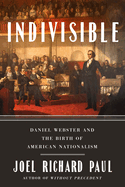
| Publisher: | Riverhead | |
| Genre: | Biography & Autobiography, United States, 19th Century, Political, History | |
| ISBN: | 9780593189047 | |
| Pub Date: | October 2022 | |
| Price: | $30 |
| History |
by Joel Richard Paul
"Liberty and union, now and forever, one and inseparable!" Daniel Webster's famous epigram, according to historian Joel Richard Paul in Indivisible, is just one of the countless contributions the American statesman made to helping unite the United States. Paul (Without Precedent; Unlikely Allies) reintroduces a new generation to Webster--a man often eclipsed in history by his contemporary, Abraham Lincoln--in this impressively researched and engaging study.
Universally acknowledged as "the 'guardian' of the Constitution, the greatest orator of the English language, and the finest constitutional advocate in our history," Webster was one of the most influential politicians of his age. His long career as an "evangelist for the Union" inspired and enraged fellow citizens in equal measure. Paul writes a larger history than the subtitle implies, spanning the development of American nationalism from 1812 to 1852; indeed, readers will learn as much about the presidencies of John Quincy Adams, Andrew Jackson and John Tyler as they will about Webster. However, Paul highlights the relevance of Webster as the scintillating orator who, with great emotion, swept his listeners away from their "dominant instinct" of regionalism toward one national identity. Webster, a man of failed presidential ambitions and sometimes ill-advised associations, possessed true talents in "the power of his imagery" in speeches that espoused his nationalist vision. Indivisible, which is not a biography of Webster in any sense, will appeal to history readers who want to learn how "while the Union was falling apart, our American identity was taking shape." --Peggy Kurkowski, book reviewer and copywriter in Denver
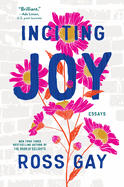
| Publisher: | Algonquin | |
| Genre: | Biography & Autobiography, Personal Memoirs, Literary Collections, Cultural, Ethnic & Regional, African American & Black, Essays | |
| ISBN: | 9781643753041 | |
| Pub Date: | October 2022 | |
| Price: | $27 |
| Starred | Essays & Criticism |
by Ross Gay
If the subject matter of his books is any indication, poet Ross Gay has a single-minded focus: making the world a better place. Following on his bestselling 2019 collection, The Book of Delights, Gay returns with Inciting Joy: Essays, a collection of 14 energetic reflections that investigate how to "make joy more available to us" and "how joy makes us act and feel."
In the service of this goal, Inciting Joy surveys an assortment of topics drawn from Gay's own experience that display his gift for intensely observing the world around him. They include his involvement in the creation of a community orchard in his hometown of Bloomington, Ind., and his appreciation for the standup comedy of Richard Pryor.
But the volume isn't a catalog of unalloyed pleasure. In "Through My Tears I Saw (Death: The Second Incitement)," Gay recounts the death of his father, a man with whom he had a difficult relationship, from liver cancer at age 58. He returns briefly to that event in the collection's penultimate and longest piece, "Grief Suite (Falling Apart: The Thirteenth Incitement)," a wide-ranging survey of male emotions and his own struggle with mental health issues.
Gay concludes Inciting Joy with an essay on gratitude, describing Aretha Franklin's rendition of "Amazing Grace," in a documentary of the making of her record of the same name. One can almost hear the ecstatic voices of a gospel choir in Gay's admonition that "we belong not to an institution or a party or a state or a market, but to each other. Needfully so." It's a fitting ending to a consistently uplifting book. --Harvey Freedenberg, freelance reviewer
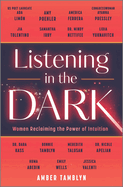
| Publisher: | Park Row | |
| Genre: | Biography & Autobiography, Women, Mindfulness & Meditation, Psychology, Body, Mind & Spirit, Women's Studies, Cognitive Psychology & Cognition, Literary Collections, Social Science, Essays | |
| ISBN: | 9780778333333 | |
| Pub Date: | October 2022 | |
| Price: | $25.99 |
| Essays & Criticism |
by Amber Tamblyn
Amber Tamblyn's Listening in the Dark: Women Reclaiming the Power of Intuition celebrates the ancient, spiritual wisdom of the inner voice and guides readers towards harnessing and embracing their intuitive intelligence. Showcasing the 15 varied stories by women across the professional spectrum, including actress and director Amy Poehler, lawmaker Ayanna Pressley and political strategist Huma Abedin, the book's impressive assemblage of writers delivers a reassuring message: intuition, that deep sensory awareness or gut feeling, is a gift accessible to everyone. Paying attention to that interior wisdom, which previous generations of women have done, has the power to heal trauma and transform lives.
Tamblyn (Era of Ignition; Dark Sparkler) is an author and actress with multiple books and awards to her name. A cultural critic and passionate women's rights advocate, Tamblyn encourages readers in her introduction to take the time to pause, be still and find a path within to guide them "when a defining moment in your life calls for deep introspection, when you are pushed to change, to fight, to leave, to stay, or to speak." The activation of intuition presents differently in every woman, as the stories (divided into sections introduced by Tamblyn) set forth in this anthology demonstrate. Ada Limón, the 24th poet laureate of the United States, is guided by dreams, whereas for Dr. Nicole Apelian, an anthropologist and contestant on the television series Alone, communion with nature provides the solitude necessary to spark intuitive thinking.
Tamblyn's inspirational road map for accessing one's intuition includes tools for pushing past old fears and letting go of unrealistic expectations toward a restorative sense of inner calm. --Shahina Piyarali, reviewer

| Publisher: | Princeton University Press | |
| Genre: | Self-Help, Mind & Body, Time Management, Death, Grief, Bereavement, Ethics & Moral Philosophy, Self-Management, Philosophy | |
| ISBN: | 9780691240596 | |
| Pub Date: | October 2022 | |
| Price: | $22.95 |
| Starred | Psychology & Self-Help |
by Dean Rickles
Dean Rickles is a professor of history and philosophy of modern physics at the University of Sydney in Australia. He's written many profound and enlightening books about the scientific philosophies of quantum gravity, physics, string theory and more. In Life Is Short, he merges his passions to deliver a deeply engaging and thought-provoking study of life and how its finite nature serves hidden depths that can lead to a much more rewarding and fulfilling existence.
People chronically compare their lives to others, procrastinate and fixate on the future, whether it's anticipation about careers or social aspirations. Rickles believes modern life is riddled with many choices that easily sway people to lean toward keeping their options open in a "kind of limbo, waiting for life to happen." However, in living this way, how much of life is spent truly unlived? In eight chapters, Rickles (Covered with Deep Mist; The Philosophy of Physics) probes issues of life and death, self-knowledge, conscious and unconscious decision-making and the role of obstacles. Under a philosophical microscope, he examines how these aspects, among others, serve to illicit greater meaning and purpose amidst the brevity of life. Wisdom from great thinkers throughout the ages--including Seneca and Rousseau, Nietzsche and William James, Carl Jung and even Woody Allen--augments this concise, well-conceived and thoroughly researched narrative.
Life Is Short is a meditative gem that is as intellectually astute as it is accessible. Readers will find much to help them in their efforts to live more mindfully--and with significantly greater appreciation. --Kathleen Gerard, blogger at Reading Between the Lines
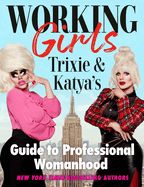
| Publisher: | Plume | |
| Genre: | Form, Business & Professional, Topic, Humor, Parodies, LGBTQ+ | |
| ISBN: | 9780593186114 | |
| Pub Date: | October 2022 | |
| Price: | $28 |
| Humor |
by Trixie Mattel, Katya Zamolodchikova
Working Girls, the second book from RuPaul's Drag Race alumnae Trixie Mattel and Katya Zamolodchikova, is hilarious and offers, according to Katya, "the most innovative and cutting-edge techniques and practices for professional advancement, from two trustworthy titans of talent." Trixie and Katya (Trixie and Katya's Guide to Modern Womanhood)--the drag personas of Brian Michael Firkus and Brian Joseph McCook, respectively--are polished, clever writers and, with every book, gain a stronger foothold on Miss Manners's throne. They offer outrageously funny advice that is often surprisingly thoughtful and practical.
The duo covers all aspects of work, from job interviews to retirement. They offer delightfully droll responses to interview questions. "What is your biggest weakness?" could be met with "I can only hold my breath underwater for two minutes." And "in your chair, wearing your clothes, and asking these very questions" could be a response to "Where do you see yourself in five years?" They translate office lingo; provide advice for navigating discussions about raises; and profile notable "girlbosses," such as Miranda Priestly ("every gay masochist's Mommie Dearest fantasy") and Elvira ("basically the first mainstream drag queen"). And they explain office politics, remote work and firing someone (in a chapter subtitled "It's Not Me, It's You."). Trixie also walks readers through every job she's been fired from: "Pretty much the only job I haven't been fired from is this one, and that's because I'm self-employed," she writes.
Albert Sanchez and Pedro Zalba's vibrant photographs are a visual treat. Katya is especially chameleon-like when spoofing the looks of the leading ladies of Basic Instinct, Working Girl and Mad Men. --Kevin Howell, independent reviewer and marketing consultant

| Publisher: | Thames & Hudson | |
| Genre: | Design, Art, Textile & Costume, Fashion & Accessories, General, Collections, Catalogs, Exhibitions | |
| ISBN: | 9780500025949 | |
| Pub Date: | October 2022 | |
| Price: | $75 |
| Starred | Art & Photography |
by Marie-Sophie Carron de la Carrière et al.
Elsa Schiaparelli (1890-1973) and Coco Chanel may have been rivals in the field of 20th-century couture, but one of the ways the former distinguished herself was by incorporating surrealist elements into her work. This is hammered home in the illuminating and grand Shocking: The Surreal World of Elsa Schiaparelli, whose contributors take the position that the Italian designer should assume a place among the surrealist artists of her time.
The book--a companion to the Musée des Arts Décoratifs, Paris, exhibition Shocking! The Surreal Worlds of Elsa Schiaparelli--comprises five essays and around 30 descriptive sidebars introducing pieces from the exhibition. Readers learn that Schiaparelli employed trompe l'oeil elements even before she collaborated with some of the leading surrealist luminaries, including Salvador Dalí, with whom she created her famous shoe hat and her infamous lobster dress. And if that wasn't proof enough of Schiaparelli's surrealist bona fides, Man Ray was on the scene to photograph her work.
Ray's black-and-white shots are among the book's stunning visuals, which include design drawings and color photographs of Schiaparelli's creations. Not even the most dedicated fashionista will leave Shocking without a deeper sense of Schiaparelli's effort to make clothes that encouraged people to think. As contributor Marie-Pierre Ribère puts it, "her creations were intended to not just be simple couture garments but rather intellectual works that occupied a special place in surrealist iconography." Now with Shocking, they can occupy a special place in a library--in either the art or the fashion section. --Nell Beram, author and freelance writer
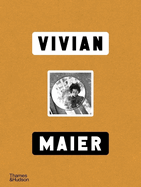
| Publisher: | Thames & Hudson | |
| Genre: | Photography, Monographs, Individual Photographers | |
| ISBN: | 9780500025703 | |
| Pub Date: | October 2022 | |
| Price: | $65 |
| Art & Photography |
by Christa Blümlinger et al.
To learn all about Vivian Maier (1926-2009)--the great American street photographer whose work was unknown until its discovery two years before her death in her Chicago storage space--readers would do well to consult Ann Marks's Vivian Maier Developed: The Untold Story of the Photographer Nanny. And then, for those who want sheer retinal pleasure, there's Vivian Maier. As contributor Anne Morin puts it, the photographer "lingered on the residual moments in social life to which no one pays attention."
Vivian Maier groups more than 200 black-and-white and color photographs, most taken in the mid-1900s in New York and Chicago, into themed bundles: "Gestures," "Cinematic," "Childhood" and so on. In "Forms," a pair of work gloves on the ground resembles severed hands. "Streets" captures city kids and commuters, people reading newspapers and sailors and other men in uniform. Maier is a sort of Dorothea Lange of the city, her human subjects a racially and economically mixed bunch. When Maier's subjects occasionally signal their notice of her camera, they know better than to give her a fabricated smile--that's not what she's after.
A hallmark of Maier's work is the way it seems utterly bereft of the artist's ego. Is it a tragedy that her photographs were unknown until the tail end of her life? The section "Self-Portraits" would seem to suggest not. Maier tended to shoot herself in mirrors, looking away, in silhouette and otherwise collaborating with the apparent opinion of the world that she wasn't really there. --Nell Beram, author and freelance writer
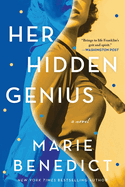
| Publisher: | Sourcebooks Landmark | |
| Genre: | Women, General, Literary, Biographical, Fiction, Historical | |
| ISBN: | 9781728260105 | |
| Pub Date: | October 2022 | |
| Price: | $16.99 |
| Now in Paperback |
by Marie Benedict
In Her Hidden Genius, Marie Benedict once again illuminates a woman overlooked by history, as she did with the neglected brilliance of Hedy Lamarr in The Only Woman in the Room and Mileva Maric in The Other Einstein. Benedict's sixth novel presents an accessible story of physical chemist Rosalind Franklin's breakthrough DNA discoveries, as well as her bold presence in male-dominated mid-20th-century science.
Despite her family's pleas, Franklin leaves postwar London in 1947 for Paris--"a place where the Nazis... once governed," her father laments--to work as a researcher with X-ray crystallography. Her lifelong mantra guides her: "Focus on the science." Though her research is successful and Paris is "the only place" she ever "fit in," an awkward romance with a colleague prompts her return to London. She thrives in the King's College lab but endures misogyny and disrespect, addressed as "Miss Franklin" or the dismissive "Rosy" rather than "Doctor." More disturbing are the obvious appropriations of her work, groundbreaking photographic evidence of her helix theory, by fellow scientists seeking to claim the discovery of the structure of DNA. In fact, three of her peers won the 1962 Nobel Prize for DNA research; she was not acknowledged.
"I am a scientist, first and always," Franklin declares, but she was also a good friend, a loyal daughter and an enthusiastic hiker. Benedict (The Mystery of Mrs. Christie) presents a complex woman, while foreshadowing her fatal illness--suggesting her strong work ethic led to dangerous X-ray exposure. Her Hidden Genius is an overdue testimony to a fascinating scientist. --Cheryl McKeon, Book House of Stuyvesant Plaza, Albany, N.Y.
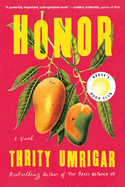
| Publisher: | Algonquin | |
| Genre: | Women, Cultural Heritage, Family Life, Marriage & Divorce, Fiction | |
| ISBN: | 9781643753300 | |
| Pub Date: | October 2022 | |
| Price: | $16.99 |
| Now in Paperback |
by Thrity Umrigar
Indian-American novelist Thrity Umrigar (The Secrets Between Us) brings a wise, compassionate lens to a brutal subject in Honor, her ninth novel for adults.
On vacation in the Maldives, journalist Smita Agarwal gets a call from a friend and colleague: Shannon has been badly injured and needs Smita's help. Shannon wants Smita to pick up a story: a court case brought by Meena, a young Hindu mother, against her two brothers, who killed Meena's Muslim husband. Though Smita is an experienced gender issues reporter, this story tramples her attempts at objectivity, especially as she comes to know Meena and her small daughter, Abru.
Meena's story drives the novel's plot, but the narrative ultimately turns on Smita's experience: her decision to stay and cover the story, her evolving relationship with Shannon's friend Mohan, her fierce and complicated feelings for the country of her birth. Having successfully avoided India since leaving it at age 14, Smita is forced to confront the layers of contradictions in her homeland: at once beautiful and maddening, modern and stubbornly mired in ancient traditions.
Umrigar sharply portrays the contrasts between cosmopolitan Mumbai, Smita's relentlessly American sensibility and the much more traditional practices that govern life in villages like Meena's. The rights of women are, of course, a central theme, but Umrigar also digs into religious strife, the challenges of loving one's country, and the agonizing slowness of trying to change any legal system. Full-bodied and insightful, Honor is both a page-turning account of a horrific family drama and a meditation on the complexities of love--both personal and national. --Katie Noah Gibson, blogger at Cakes, Tea and Dreams

| Publisher: | Gallery | |
| Genre: | Psychological, Domestic, Suspense, Thrillers, Fiction | |
| ISBN: | 9781982150327 | |
| Pub Date: | October 2022 | |
| Price: | $17.99 |
| Now in Paperback |
by Katherine Faulkner
Family, friendship, deception and doubt permeate Greenwich Park, British journalist Katherine Faulkner's debut novel. The suspense is heightened by the risk to three pregnant women and their babies, linked by family as well as secrets.
The mystery begins with an "Afterward" section on page one of Faulkner's story, an unsigned letter to Helen from Her Majesty's Prison that says "I hope you know I never meant for things to end the way they did." The plot then unfolds from Helen's first prenatal class. Twenty-four weeks pregnant, she's on maternity leave, bored and drawn to overly friendly Rachel, in spite of her painted, chewed nails, her too-dyed hair and her "wolfish" smile. Ignoring a sense of foreboding, demure Helen accepts Rachel's "coincidental" insinuations into her days, as Helen's husband is distracted by work, and her brother and sister-in-law, Serena, who is also expecting, become oddly blasé toward her.
Alternating first-person narratives from Helen, Serena and their family friend Katie, a journalist, abound with foreshadowing and clues, in a complex story that invites speculation: Who became the prisoner, and what was the crime? Brief descriptions of rushed trysts between unidentified lovers in the leafy recesses of Greenwich Park and recurring reflections on an event a decade earlier add intrigue.
Faulkner's psychological thriller is precise and tight, as unreliable narrators present suspicious twists. One credible voice and a comforting summary slowly ease the meticulously crafted suspense of this chilling, fast-paced tale. --Cheryl McKeon, Book House of Stuyvesant Plaza, Albany, N.Y.

| Publisher: | Dutton | |
| Genre: | People & Places, United States - Asian American & Pacific Islander, Girls & Women, Young Adult Fiction, LGBTQ+ | |
| ISBN: | 9780525555285 | |
| Pub Date: | October 2022 | |
| Price: | $18.99 |
| Starred | Children's & Young Adult |
by Malinda Lo
Malinda Lo follows up her 2021 National Book Award-winning YA novel, Last Night at the Telegraph Club, with the companion novel, A Scatter of Light, which takes place in 2013 and tells the powerful story of one young woman's life-changing summer of self-discovery.
Eighteen-year-old, half-Asian Aria Tang West was supposed to spend her final summer before college "on Martha's Vineyard with my friends, not in the remote woods [of California] with my grandmother." She expects a few forgettable months, until she befriends Steph, her grandmother's gardener. "Boyish" 20-something Steph inspires confusing feelings for Aria--"a sweet ache that I was embarrassed to feel"--even as Aria befriends Steph's girlfriend, Lisa, and the other members of their working-class queer community. Against a verdant, sun-drenched California backdrop, Aria reevaluates her desires: who she wants to be and who she wants to be with.
Lo's novel explores the complexity of queer identity through a sex-positive lens. Flashbacks to Aria's past sexual encounters reveal her struggle distinguishing between her own desires and social expectations. Lo vividly conveys the giddy euphoria of a teenage crush while also recognizing the fraught nature of Aria and Steph's mutual attraction when Steph is in a relationship with someone else. And yet A Scatter of Light does not make moral judgments about its characters--Aria's foibles and mistakes are what make her a compelling protagonist.
Both newcomers and longtime fans of Lo's work should enjoy this narrative of a young woman coming to understand herself and her wants better. --Alanna Felton, freelance reviewer
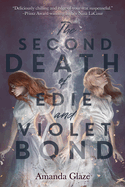
| Publisher: | Union Square & Co. | |
| Genre: | Paranormal, Occult & Supernatural, Fantasy, Thrillers & Suspense, Young Adult Fiction, Supernatural, Historical | |
| ISBN: | 9781454946786 | |
| Pub Date: | October 2022 | |
| Price: | $18.99 |
| Starred | Children's & Young Adult |
by Amanda Glaze
Jam-packed with sisterly love, 19th-century Spiritualism, romance, mystery and nascent feminism, The Second Death of Edie and Violet Bond is a delicious historic novel for 21st-century book lovers of all stripes.
Seventeen-year-old twins Edie and Violet have inherited their mother's gift of channeling spirits (Violet) and crossing the threshold between life and death (Edie). When their mother dies under mysterious circumstances, the young women run away from their minister father who plans to commit them to Sacramento's Asylum for the Insane because of their "unnatural" abilities. Violet and Edie join a traveling Spiritualist troupe in which the female performers are mostly expected to put on a good show, sending well wishes from the afterlife to grieving loved ones left behind. Edie and some of the other young ladies in the troupe decide to use their powers for change by "channeling" great minds like Aristotle or Benjamin Franklin: "As long as they were dead--and preferably male--Edie could give a lecture on almost any topic she desired, and the audience would eat it up." Then mediums around the city start vanishing and a strange dark force begins appearing when Edie opens the Veil into death. The twins will have to use their actual powers--not their influence--to keep the ones they love safe.
Inspired by her great-grandmother Edie Bond and Edie's twin sister, Violet (both spirit mediums), this debut novel from Amanda Glaze gives readers an energetic and exciting story that offers both passionate philosophical discourse and spooky séances. --Emilie Coulter, freelance writer and editor
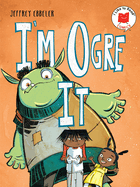
| Publisher: | Holiday House | |
| Genre: | Beginner, Humorous, Monsters, Family, Juvenile Fiction, Comics & Graphic Novels, Readers, Siblings | |
| ISBN: | 9780823450183 | |
| Pub Date: | October 2022 | |
| Price: | $14.99 |
| Starred | Children's & Young Adult |
by Jeffrey Ebbeler
I'm Ogre It is a hilarious and inspiring comic book ode to creative fun without screens, just right for young readers who might need the tiniest boost to become bookworms.
Izzie's big brother Ollie is really, really into video games, specifically Smash Tower, which features monsters, robots and evil fairies with a Stinking Swamp to navigate and a Tipping Tower to climb. He's so into it that he's gotten rid of most of his beloved old toys, much to Izzie's dismay. "That is baby stuff. I am over it," he tells his sister, a brown-skinned girl with gravity-defying blue-black pigtails, and her new friend Tim, a sweet green ogre who has just moved into the cave next door. Enterprising Izzie and Tim begin emptying Ollie's room of his remaining possessions, while Ollie natters on about his game. When he finally looks up to an empty room and goes searching for his sister, he discovers a real-life obstacle course, made up, on closer look, of all his discarded toys and furniture.
While no kid likes to be nagged about putting down the devices, any kid is likely to adore the wild and inventive IRL version of Ollie's video game--message subtly received. Simple language and delightful, brightly colored artwork make this I Like to Read Comic particularly appealing to emergent readers. Jeffrey Ebbeler, prolific illustrator and author of other titles in the series (Kraken Me Up and A Giant Mess), has created a winner, no tech needed! --Emilie Coulter, freelance writer and editor
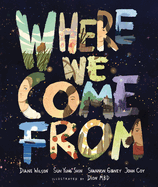
| Publisher: | Carolrhoda Books | |
| Genre: | Biography & Autobiography, United States - State & Local, General, Poetry, Literary, History, Juvenile Nonfiction, Diversity & Multicultural | |
| ISBN: | 9781541596122 | |
| Pub Date: | October 2022 | |
| Price: | $18.99 |
| Children's & Young Adult |
by Diane Wilson, Sun Yung Shin, Shannon Gibney, John Coy, illust. by Dion MBD
In this dreamy mosaic of stories, four authors share their family histories, spirituality and cultures from ancient times to the present, lyrically capturing the moving and endless variety of American experiences.
The far-reaching and poetic Where We Come From explores the multitudes of identity that make up every individual. Diane Wilson (The Seedkeeper), Sun Yung Shin (The Wet Hex), Shannon Gibney (See No Color) and John Coy (Hoop Genius) begin their individual stories as one: "We come from single cells evolving over billions of years as did all life on Earth--bacteria, trees, animals!" Over subsequent engagingly illustrated pages, the authors move through time, still as a united "we." The voices then divide into four and work toward present days, taking turns (in first-person singular now) chronicling their origins as Dakota, Black and Irish American, Korean American, and Irish and Scottish American.
The digital art of Indonesian illustrator Dion MBD (Every Day: The Graphic Novel) provides a warm and layered foundation for the developing stories. He uses light and shadow to lovely effect, and weaves almost mystical elements into the imagery. Rather than creating one tightening thread that brings the narratives together into a single American story, the overall feel of Where We Come From is that of a glorious hodgepodge. Back matter elaborates on the specific nonfiction details of the stories and illustrations, providing context and a fuller background to the poetic, mystical-sounding text.
This beautifully illustrated paean to the endless variety of American experiences is a terrific response to the insensitive query: "No, but where do you really come from?" --Emilie Coulter, freelance writer and editor
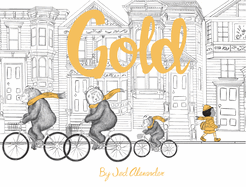
| Publisher: | Creston Books | |
| Genre: | Adaptations, Alternative Family, Animals, Family, Juvenile Fiction, Bears, Fairy Tales & Folklore | |
| ISBN: | 9781954354111 | |
| Pub Date: | October 2022 | |
| Price: | $18.99 |
| Children's & Young Adult |
by Jed Alexander
With Red, Jed Alexander presented his first inverted fairy tale: a wolf tries to head off a red-cloaked girl as she walks through the woods, à la "Little Red Riding Hood," although it's really just a ruse to stop her from spoiling a surprise party in her honor. In Red's likewise wordless follow-up, Gold, it's "Goldilocks and the Three Bears" that gets reworked, and the big reveal is both a gotcha and a consciousness-raiser.
Gold begins with a bear family of three leaving their townhouse and setting off on their bikes. On the next page, a Black girl gets off a school bus. She walks to and enters the house, drops her belongings on the floor and proceeds to the kitchen, where she starts cooking something that could pass for porridge. The bears return to find the girl's things on the floor, and readers will tense for a confrontation. But what's this? The bears' faces betray delight at the aroma of food and the sight of the girl napping on the couch: turns out she's a member of their family.
Once again, Alexander limits his palette to black and white plus the odd accent color, in this case gold, which shades the bears' scarves, the girl's coat and so on--but not, it should be noted, her hair. The restricted palette serves Gold's message well. The concluding spread shows the loving family of four in a sleeping heap on the couch, the gold in the girl's clothing the only difference in color. --Nell Beram, freelance writer and YA author